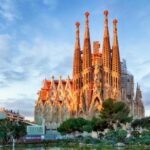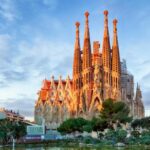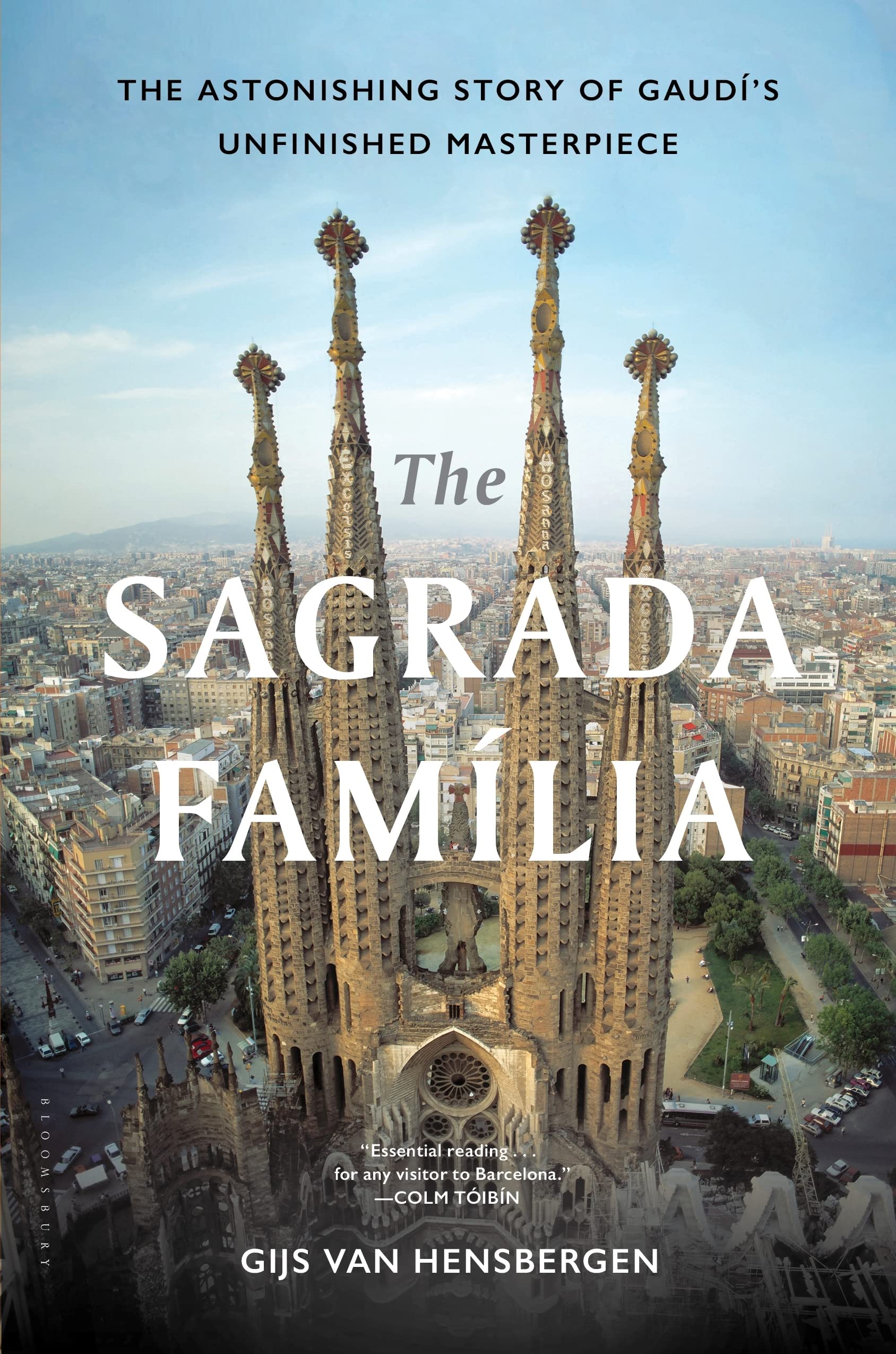
The Sagrada Familia, an iconic basilica located in Barcelona, is the epitome of Antoni Gaudí's innovative architectural vision. This extraordinary structure, under construction since 1882, combines Gothic and Art Nouveau styles, making it a unique symbol of Catalan culture and creativity.
In this article, titled The Sagrada Familia: An In-depth Explanation of Gaudí's Masterpiece, we will explore the intricate details, historical significance, and the visionary concepts that define this remarkable monument. From its stunning facades to its breathtaking interior, the Sagrada Familia stands as a testament to Gaudí's genius and his dedication to his craft.
The Architectural Significance of the Sagrada Familia: A Closer Look at Gaudí's Vision
The architectural significance of the Sagrada Familia lies in its innovative fusion of natural forms and structural integrity. Gaudí was inspired by the shapes and patterns found in nature, which is evident in the basilica's organic lines and curves. This approach not only enhances the aesthetic appeal but also contributes to a sustainable architectural model, demonstrating a profound understanding of both form and function.
One of the most striking features of the Sagrada Familia is its use of light. Gaudí designed the interior to interact dynamically with natural illumination, employing stained glass windows that cast vibrant colors throughout the space. This interaction creates a spiritual atmosphere, emphasizing the connection between the divine and the natural world, which was central to Gaudí's vision.
- Structural Innovation: Use of hyperboloid structures.
- Symbolism: Each façade represents significant biblical narratives.
- Environmental Integration: Designed to harmonize with its urban surroundings.
Additionally, the basilica's complex geometry presents a challenge and a breakthrough in modern architecture. By employing avant-garde techniques such as catenary arches and twisted columns, Gaudí not only pushed the boundaries of architectural design but also laid the groundwork for future generations of architects. The Sagrada Familia stands as a remarkable example of how visionary thinking can transform traditional architectural concepts into groundbreaking structures.
Exploring the Symbolism Behind the Sagrada Familia's Facades and Towers
The facades of the Sagrada Familia are not merely decorative; they are rich with symbolism that conveys deep religious narratives. Each facade—the Nativity, Passion, and Glory—reflects different aspects of Christ's life and teachings. The intricate designs and sculptures serve as visual stories, allowing visitors to engage with the biblical themes without the need for words.
On the Nativity Facade, for instance, the abundance of life and nature symbolizes the birth of Jesus. Here, Gaudí incorporates various elements such as animals and plants, which represent God's creation. In contrast, the Passion Facade portrays the somber aspects of Christ's crucifixion, using stark lines and angular shapes to evoke a sense of suffering and sacrifice, firmly grounding the structure in its spiritual mission.
- Nativity Facade: Represents birth and joy with elements of nature.
- Passion Facade: Focuses on suffering and sacrifice through dramatic sculptures.
- Glory Facade: Envisions resurrection and eternal life, still under construction.
The towers of the Sagrada Familia further enhance its symbolic nature. Each tower represents a different apostle, with the tallest tower dedicated to Jesus Christ, symbolizing His supremacy. The design of these towers is influenced by the idea of reaching towards the heavens, reinforcing the basilica's spiritual aspirations. As they rise, they embody the connection between the earthly and the divine, making the entire structure a profound statement of faith.
The Construction Journey of the Sagrada Familia: A Timeline of Gaudí's Masterpiece
The construction journey of the Sagrada Familia began in 1882, catalyzed by the vision of architect Francisco de Paula del Villar. However, it was Antoni Gaudí who took over the project in 1883 and transformed it into his magnum opus. Under Gaudí's guidance, the timeline of this monumental work has been marked by innovative techniques and a steadfast dedication to its intricate design.
Key milestones in the construction timeline include:
- 1882: Groundbreaking of the Sagrada Familia.
- 1883: Gaudí becomes the chief architect.
- 1926: Gaudí's death, leaving the basilica unfinished.
- 2026: Projected completion date for the centenary of Gaudí's death.
Throughout its construction, the Sagrada Familia has faced numerous challenges, from funding shortages to the effects of the Spanish Civil War. Despite these obstacles, the project has continued to evolve, incorporating advanced technologies and methods. Today, it stands as an evolving symbol of spiritual devotion and architectural innovation.
Significantly, the Sagrada Familia's construction relies heavily on donations, making it a collective effort of both locals and visitors. This community involvement not only reflects the cultural importance of the basilica but also emphasizes its ongoing journey, reminding us that it is as much a living project as a historical one.
Understanding the Influence of Nature in the Design of the Sagrada Familia
Understanding the influence of nature in the design of the Sagrada Familia reveals Antoni Gaudí's deep reverence for the natural world. Gaudí believed that nature was a direct reflection of divine creation, and he sought to integrate its forms and structures into his work. This philosophy is evident in the basilica's organic shapes, which mimic the curves and lines found in plants, animals, and landscapes, creating a harmonious connection between architecture and the environment.
One of the key elements of Gaudí's design is his use of biomimicry, where architectural forms are inspired by natural elements. For instance, the columns inside the basilica resemble tree trunks, branching out to support the ceiling in a way that evokes a forest canopy. This technique not only enhances the aesthetics but also provides structural stability, demonstrating how nature can inform architectural integrity.
- Natural Light: The strategic placement of windows allows sunlight to fill the interior, creating an ever-changing play of light and shadow that mimics the natural world.
- Organic Shapes: Curvilinear designs throughout the structure reflect natural forms, embodying the essence of growth and life.
- Material Use: Gaudí employed materials that harmonize with the natural environment, ensuring that the structure blends seamlessly into its surroundings.
Moreover, Gaudí's approach to sustainability is evident in his commitment to using local materials and traditional techniques. By drawing from the surrounding landscape, he not only minimized the ecological footprint of the project but also celebrated the unique geological features of Catalonia. This dedication to nature not only defines the Sagrada Familia but also serves as a model for future architectural endeavors aiming to achieve a balance between built environments and the biodiversity of our planet.
Why the Sagrada Familia is a UNESCO World Heritage Site: Cultural Importance and Recognition
The Sagrada Familia was designated as a UNESCO World Heritage Site in 2005, recognizing its outstanding universal value and cultural significance. This classification highlights not only its architectural brilliance but also its deep-rooted connections to Catalonia's identity and the broader narrative of humanity's artistic expression. The basilica serves as a symbol of innovation, showcasing the unique blend of Gothic and Art Nouveau styles that defines Gaudí's work, making it a pivotal example of modernist architecture.
Through its intricate designs and profound symbolism, the Sagrada Familia captures essential themes of faith, nature, and human creativity. Each element of the basilica—from its towering spires to the detailed sculptures—tells a story that resonates with visitors from around the globe. The integration of biblical narratives into its architecture not only enhances its spiritual significance but also invites a diverse audience to engage with its message, reinforcing its status as a cultural landmark.
Moreover, the Sagrada Familia represents a community effort, embodying a collective aspiration that transcends generations. The ongoing construction, fueled by public donations and volunteer work, reflects a shared commitment to preserving and promoting this architectural marvel. This aspect not only emphasizes its cultural importance but also highlights the role of public involvement in safeguarding heritage, ensuring the basilica remains a vital part of Barcelona's cultural landscape.
In conclusion, the UNESCO designation of the Sagrada Familia underscores its significance as a masterpiece of human creativity and a testament to cultural resilience. It stands as a beacon of inspiration, attracting millions of visitors each year who come to witness its beauty and to experience the spiritual connection woven throughout its design. As the construction progresses, the Sagrada Familia will continue to evolve, reinforcing its place in the global heritage narrative.
Visiting the Sagrada Familia: Tips for Exploring Gaudí's Iconic Basilica
When planning a visit to the Sagrada Familia, it’s essential to book your tickets in advance. The basilica attracts millions of visitors each year, and securing your entry online not only saves time but also guarantees access, especially during peak seasons. Additionally, consider choosing a guided tour to deepen your understanding of Gaudí's vision and the intricate details of this architectural marvel.
Arriving early is another smart strategy. The early morning hours offer a quieter experience, allowing you to fully appreciate the beauty of the basilica without the crowd. Moreover, take your time to explore the surrounding area, where you can find charming cafes and shops that reflect the local culture. Don't forget to capture the stunning facades and towering spires from various angles, as they offer unique perspectives throughout the day.
- Optimal Visiting Times: Early morning or late afternoon for reduced crowds.
- Essential Items: A camera, comfortable shoes, and a water bottle.
- Weather Considerations: Check the forecast, as the weather can affect your visit.
Finally, immerse yourself in the spiritual atmosphere of the interior by taking the time to sit in contemplation. Observe how the light filters through the stained glass windows, creating a mesmerizing play of colors. This serene environment not only enhances your visit but also allows for a deeper connection to the architectural and spiritual significance of Gaudí's masterpiece.
 The Fascinating Facts about Sagrada Familia: Unveiling Gaudí's Masterpiece
The Fascinating Facts about Sagrada Familia: Unveiling Gaudí's Masterpiece The Fascinating Facts About La Sagrada Familia: Barcelona's Architectural Masterpiece
The Fascinating Facts About La Sagrada Familia: Barcelona's Architectural MasterpieceIf you want to know other articles similar to The Sagrada Familia: An In-depth Explanation of Gaudí's Masterpiece you can visit the category WHERE YOU CAN GO.
Leave a Reply










Read more!